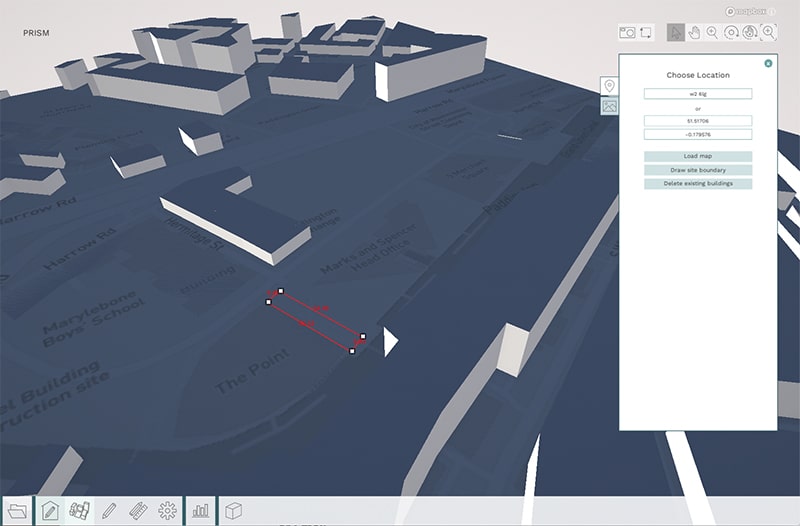As the global population continues to increase, cities have struggled to meet the housing needs of their skyrocketing populations.
London, a city whose current housing demand is more than 50,000 per year, typifies this problem. In response, the city has pioneered the development of an innovative technology that could become a critical tool in solving the crisis—and whose use is not just limited to engineers or designers but is free and available to anyone with internet access.
This solution is PRISM, a web-based app that allows a user to plot the creation of high-quality, factory-built homes within the city that conform to the government’s progressive building standards.
The idea for the app grew from a 2017 report by the London Assembly Planning Committee. The report, in acknowledging how the shortage of housing has led to an exorbitant cost of living, suggested that design standardization and an increased use of prefabricated materials could boost the speed of construction.
With these principles in mind, PRISM was born over the course of a 20-month long collaboration between engineering and design firm Bryden Wood; construction consultancy Cast; and the Office of the Mayor of London, Sadiq Khan.
Mark Farmer, Cast’s chief executive, described the impetus behind PRISM: “Modernization of London’s construction industry is vital if it is to overcome growing challenges in terms of lack of resourcing, skills and training, diversity and poor building quality. This app will enable designers to concentrate on aesthetic quality…whilst allowing greater consideration of manufactured building systems and components that can make the home-building process more productive and predictable, delivering better outcomes for London.”
How does PRISM work?
The app’s simple interface can be accessed through computer, tablet or phone—any device that has a web-browser. “The scale of the challenge is so great that we will only succeed if we work together,” said Jami Cresser-Brown, architecture director of Bryden Wood, speaking of the decision to allow free use of the technology. “Anyone can play a role in the design process and its next stages of innovation.”
Once on the app, anyone can make use of its two main functions. The first function allows the user to input the data needed for benchmarking a project’s location and design. The app allows its users to choose a location from a map of London or upload their own map. One can even play with the intended space by deleting existing building or drawing site boundaries.

After defining the location, an individual can get to work feeding in the design specs—such as the building’s orientation, number of floors, makeup of units, apartment spaces and if it will have a balcony or not.
Finally, in the last step of this initial function, the user chooses the type of materials to be used in construction.
The collection of all this information is vital to the proper implementation of the app’s second function—generating a model of the building that, not only is built from the data outlined by the user, but meets the conditions required by the city as well.
The hope, then—with the particulars provided by this initial check of conformance—designers and developers will be able to fast-forward the early planning process and, in effect, double the speed with which new housing is built.
Also intriguing is the “Systemization Analysis” tab found within this part of the app. The tab provides a user with suggestions for what offsite processes and prefabricated materials could work for their project—or, as Martyn Day, a writer for AEC Magazine, describes it, “an intuitive traffic light system [which indicates] which modern construction methodology would be best suited.”
Expanding globally?
With the United Kingdom having already invested in the development of offsite construction fabrication plants throughout the country, the app has the ability to create a powerful connection between those products and the developers that use them.
While PRISM is currently only available as a tool for London-based projects, the innovation behind the app has the potential for global use. Cities in the United States and elsewhere are confronting the same issue. In San Francisco and the surrounding Bay Area, for instance, the ratio of new jobs to housing units is 3.5:1.
To combat this issue, it’s clear new paths must be considered within the field of development.
“Technology has revolutionized so many sectors, from finance to automotive,” Cresser-Brown said, “and it is time for the construction sector to do the same. This is the only way that we will be able to meet the demand for housing and other social infrastructures.”
While implementation is often easier said than done, the advantages behind PRISM are sure to make it a compelling option for those looking to make their mark in home building.











